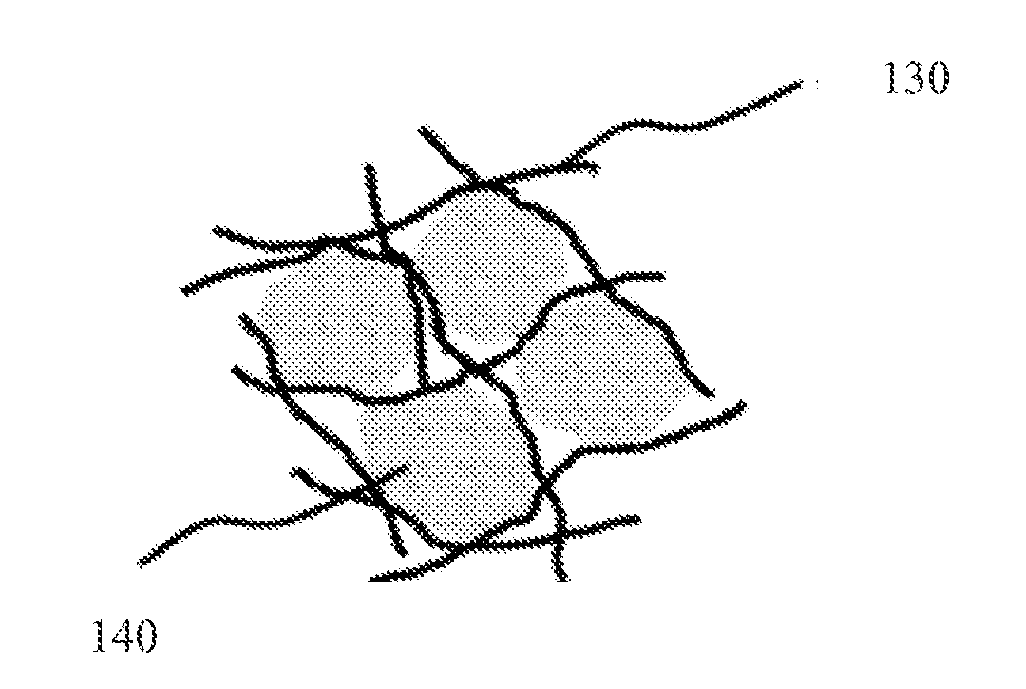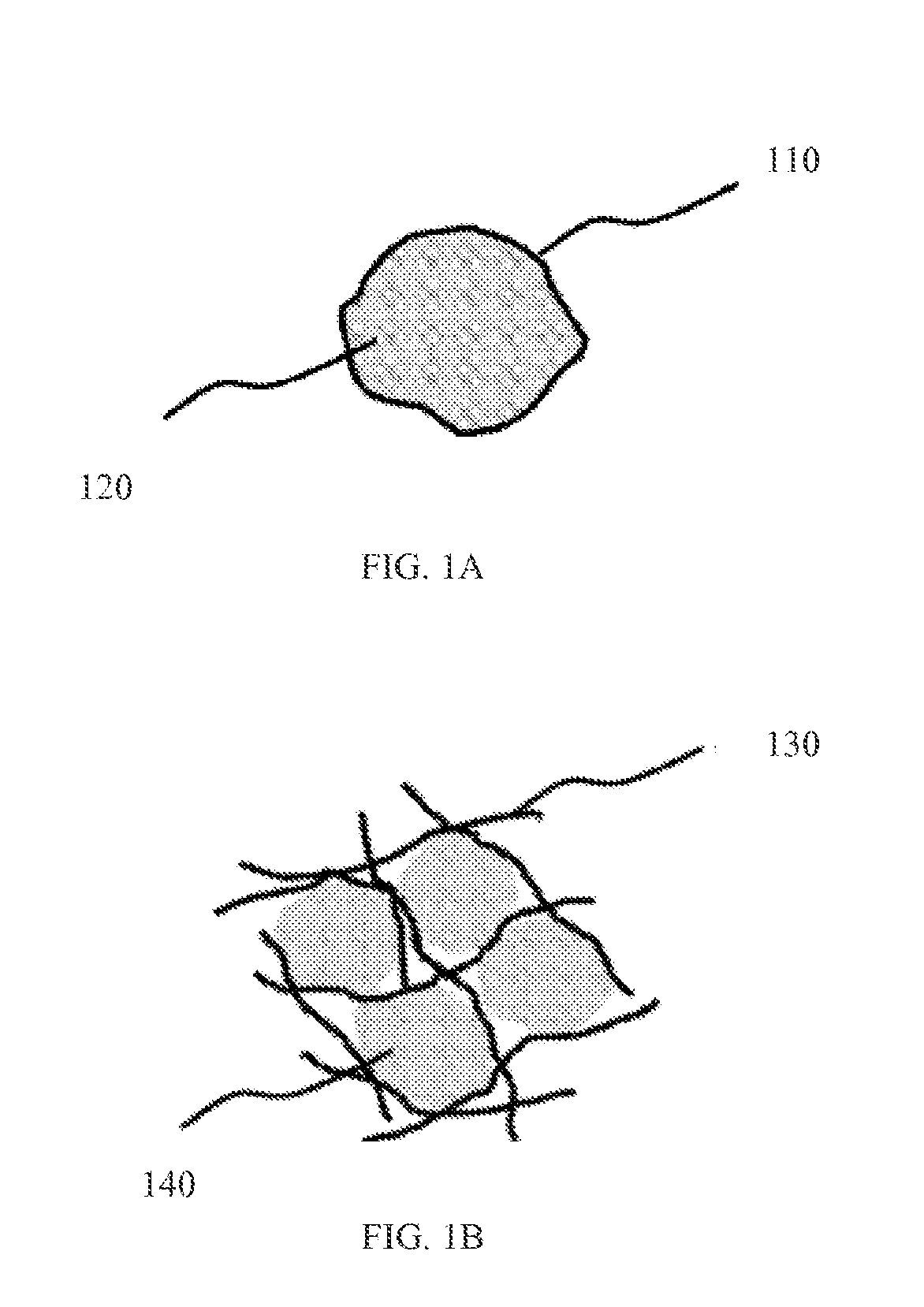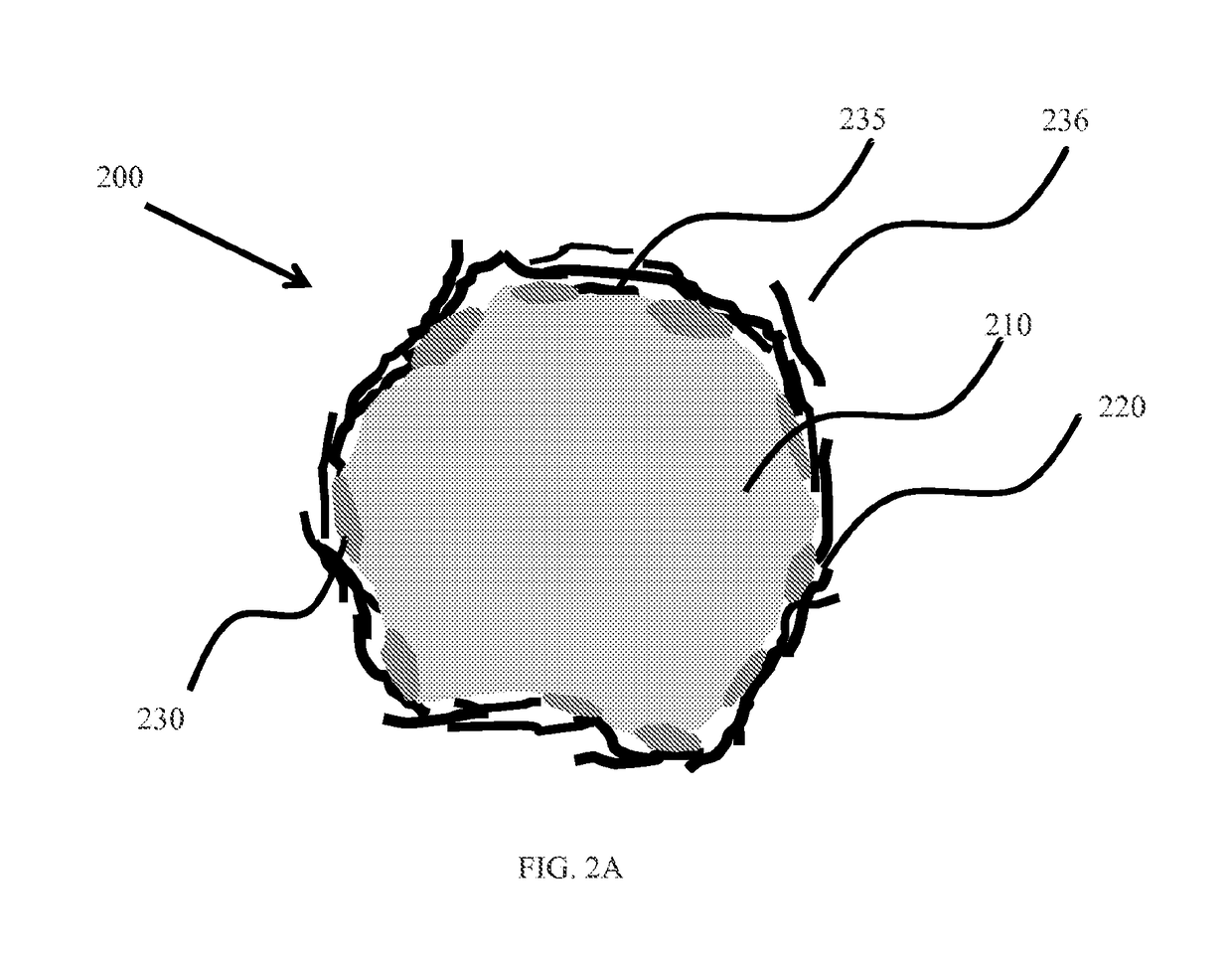LiF-EMBEDDED SiG POWDER FOR LITHIUM ION BATTERY
- Summary
- Abstract
- Description
- Claims
- Application Information
AI Technical Summary
Benefits of technology
Problems solved by technology
Method used
Image
Examples
Embodiment Construction
[0062]A nanographitic composite for use as a battery material in a lithium ion battery is described. The composite material includes nanoscale and / or microscale particles of an electroactive material that are coated with an SEI modifier additive material, and nanographitic platelets or graphene nanoplatelets. In one or more embodiments, the SEI modifier additive material is selected to effect the growth of the SEI layer on the electroactive material. In one or more embodiments, the SEI modifier additive material is selected from the group including LiF, Li2O, Li2CO3, lithiumchloride (LiCl), lithium iodide (LiI), lithium metaborate (LiBO2), lithium tetraborate (Li2B4O7), lithium benzoate (C6H5COOLi), lithium bromide (LiBr), lithium phosphate (Li3PO4), lithium trifluoromethanesulfonate (CF3SO3Li), Na2CO3, K2CO3 and mixtures thereof.
[0063]In some embodiments, the SEI modifier additive material is coated on the electroactive particle, and nanographitic platelets or graphene nanoplatelet...
PUM
 Login to View More
Login to View More Abstract
Description
Claims
Application Information
 Login to View More
Login to View More - R&D
- Intellectual Property
- Life Sciences
- Materials
- Tech Scout
- Unparalleled Data Quality
- Higher Quality Content
- 60% Fewer Hallucinations
Browse by: Latest US Patents, China's latest patents, Technical Efficacy Thesaurus, Application Domain, Technology Topic, Popular Technical Reports.
© 2025 PatSnap. All rights reserved.Legal|Privacy policy|Modern Slavery Act Transparency Statement|Sitemap|About US| Contact US: help@patsnap.com



